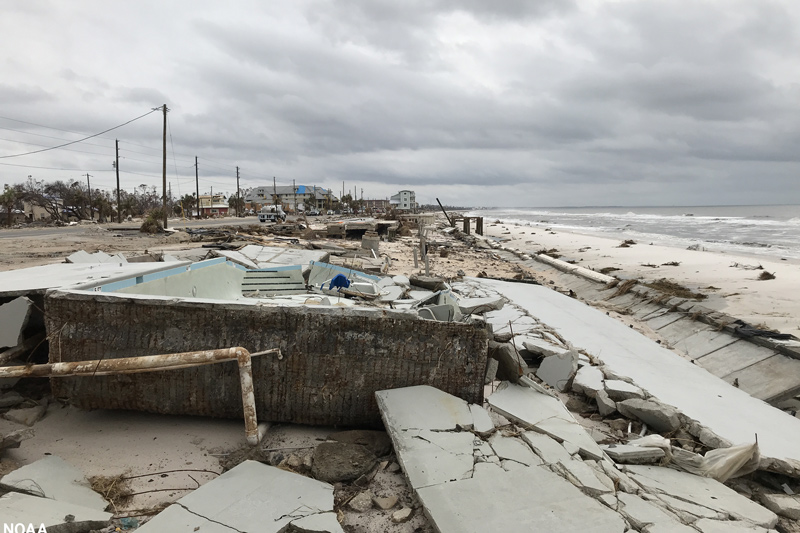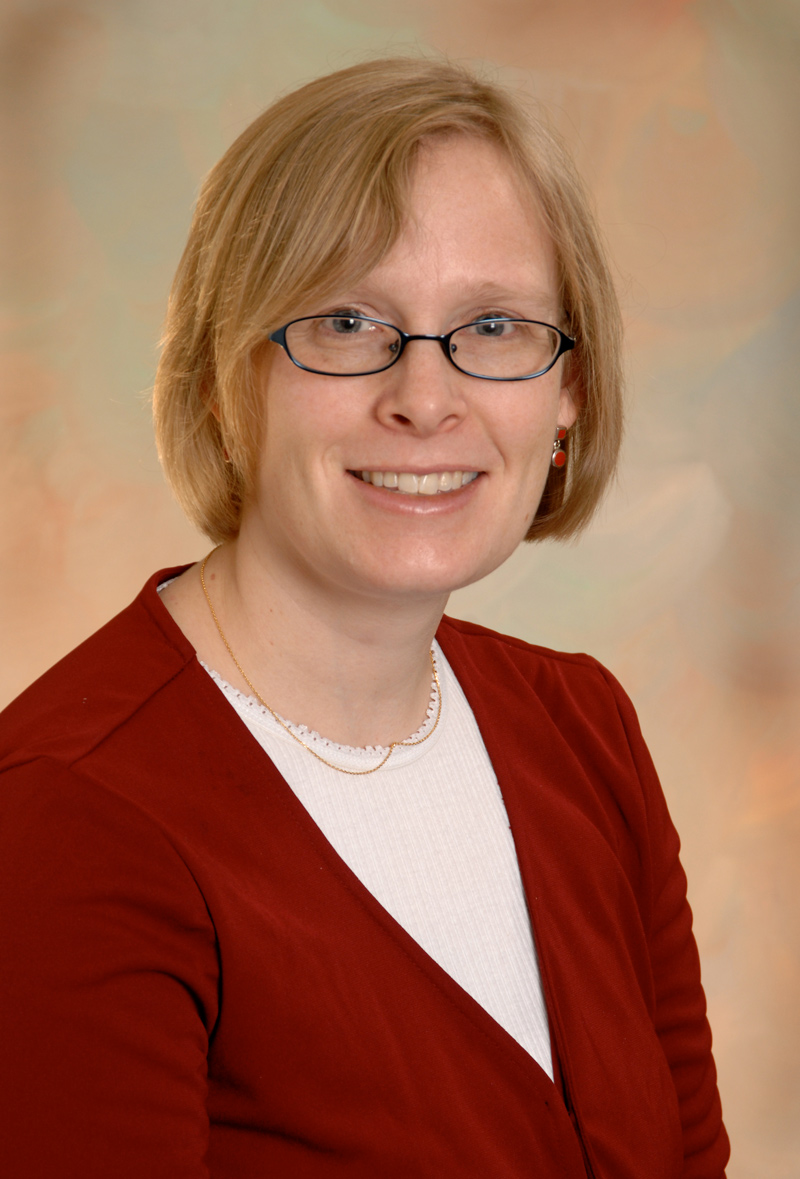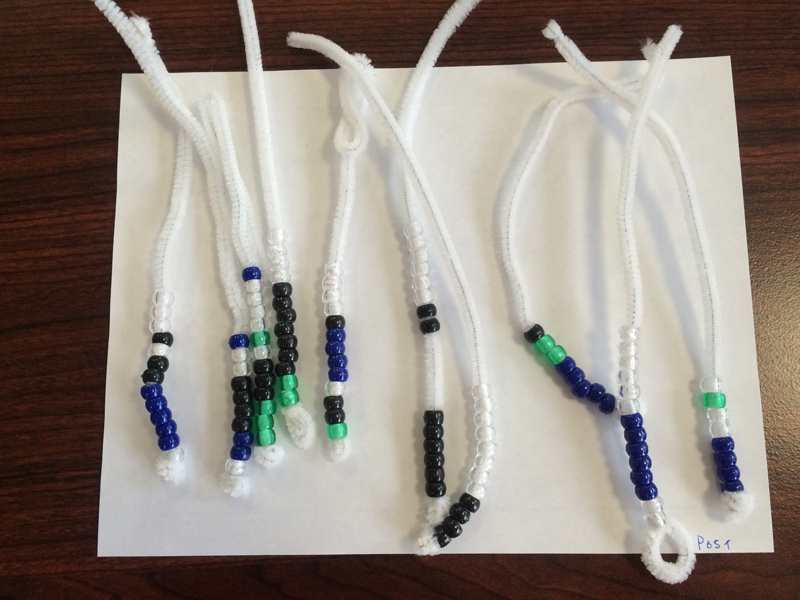


The Incredible Carbon Journey
Photos courtesy of National Oceanic and Atmospheric Administration and Dana Veron August 18, 2021
UD students and professors educate about carbon cycle science
Even for students in a higher level physical meteorology class at the University of Delaware, sometimes the best way to visualize a concept as abstract as climate change is through an interactive activity.
That was what Dana Veron, associate professor, discovered five years ago when she first introduced “The Incredible Carbon Journey” activity to her class and saw their jaws drop in recognition of how the post-industrial carbon cycle has impacted the environment.

“That was a big moment for me because I was teaching the game in a meteorology class where students had learned about climate change already multiple times,” said Veron, associate chair of the Department of Geography and Spatial Sciences in the College of Earth, Ocean and Environment. “They understood the carbon cycle, and they understood how the greenhouse effect works and things like that. But for me, watching their faces, they were like ‘Oh, I get it now. The human activity is moving massive amounts of carbon into the atmosphere.’”
Margaret Orr, a student in Veron’s class at the time who is currently a doctoral student at George Mason University working with the Center for Climate Change Communication, said that the activity helped her and her classmates visualize exactly what is happening with climate change.
Their experience in learning about and teaching the activity was recently highlighted in an article published by the American Meteorological Society.
The Incredible Carbon Journey
"The Incredible Carbon Journey" is an activity developed by the National Oceanic and Atmospheric Administration.
The activity ties into multiple standards within the high-school level Next Generation Science Standards, which describe what students should know and be able to do in science and engineering in order to make sense of the world and participate as a science-literate citizen.
During the activity, the class is divided up into four equal groups. Participants assume the role of carbon atoms and experience the carbon cycle by traveling among the carbon reservoirs in Earth’s climate system — which are represented by four stations that serve as the carbon reservoirs in the Earth’s climate system: atmosphere, biosphere (regions occupied by all living things), hydrosphere (all water, fresh and salt, such as rivers, lakes and oceans), and lithosphere (the Earth’s crust and upper mantle).
Each station has a cup full of colored beads with colors specific to that reservoir as well as a station-specific six-sided die that directs the movement of the player, who is acting as a carbon atom. They are directed to either stay in the reservoir or move elsewhere. Sometimes, lines get really long in certain stations as players are forced to stay in that particular section, representing how much carbon is stuck in certain parts of the earth’s climate system.
Players track their progress through the carbon cycle by threading the color-specific beads they gather at each station onto a pipe cleaner. After about 20 rounds, the activity ends and the students compare their pipe cleaners to see how their journeys were different through the carbon cycle.

Typically, during the first round, the pipe cleaners contain long sequences of black and/or blue beads which shows how carbon has long residence times in the lithosphere and hydrosphere.
The game is played twice, once to show the pre-industrial revolution carbon cycle and once to represent the post-industrial carbon cycle. This change occurs by swapping out the lithosphere’s post-industrial die, while the other three dice remain the same.
On the pre-industrial die, there are five out of six faces that instruct players to ‘stay’ in the lithosphere. On the post-industrial die, there are two faces that say ‘stay’ and four that say, ‘Go to the atmosphere.’ Thus, it is much easier for the player to leave the lithosphere and head to the atmosphere in the post-industrial scenario. This represents the extraction of carbon from the lithosphere, largely in the form of fossil fuels, which are then burned and deposit carbon in the atmosphere.
As a result, there are a greater number of clear beads, representing the atmosphere, on players’ pipe cleaners and fewer black beads, representing the lithosphere, compared to the first round.
Afterwards, the students discuss what they think happened to make the outcome different between the first and second rounds of the activity.
Melissa Rogers, a co-author on the paper, now a senior curriculum developer with the Smithsonian Science Education Center, said an interesting aspect of the activity is seeing the reaction of students who participate in the game because they always notice that during the second round of the activity, something is different.
“That seems to be the sense that the participants get. Something is wrong. Something is not working right. Something is not going the way it did the first time,” said Rogers. “I think it’s nice that it then carries through to a conversation to find out what’s wrong about the situation. It’s almost an emotional sense of what is going on and realizing, it’s not just the game, there is a problem here on Earth.”
Taking the activity on the road
With the activity having such a big impact on the meteorology class at UD, Veron and Orr were eager to see how the game would play out with a group that was less informed about climate change and its impacts on the atmosphere.
Having just reactivated the American Meteorological Society (AMS) chapter at UD in the spring of 2016, Orr said that part of the chapter’s mission was to develop outreach and education for nearby high schools and they decided to use "The Incredible Carbon Journey" activity at these schools.
Orr reached out to her high school’s AP Environmental Science teacher — Kathy Freeman at Strath Haven High School in Wallingford, Pennsylvania — and tried out the activity at her alma mater. It was such a success that AMS student members at UD visit the AP Environmental Science class every semester and present the activity along with a lecture to the students.
“Each time, the students really engaged with it,” said Orr. “It was great to take this activity that I participated in at UD and use that connection to make it an outreach activity.”
The AMS student chapter then took the game to other schools. They presented the activity at Newark Charter Biology classes as well as Newark Charter Intermediate School’s annual “Dinner with a Scientist” event. AMS students have even taught the activity in different UD faculty members’ classes, and Orr took the activity with her when she worked on her master’s degree at the University of Georgia.
“I was teaching an Intro to Physical Geography lab, and we do a lab about climate change,” said Orr. “It was originally just reading and responding to questions so I brought it with me. As far as I know, they still do it at Georgia because I left all the materials.”
Veron is going to use the activity in a Delaware Sea Grant internship program that’s running this summer to train science majors on how to teach about science. The activity is one of several that will be used as models for how to do an activity in a K-12 situation as well as a way to teach about climate change.
In addition, Veron has been contacted by other schools in Delaware who are interested in adapting the activity for their classes. She said that this shows the flexibility of the model and how it can be used in K-12 classrooms as well as in university courses.
“It's a model that can be tweaked to fit lots of different situations,” said Veron. “Teachers at local schools are excited about getting college students in to talk to their high school students. It’s powerful for those students to talk to somebody who is just a few years older and is engaging with this material that really excites them. I think that is inspiring.”
Contact Us
Have a UDaily story idea?
Contact us at ocm@udel.edu
Members of the press
Contact us at 302-831-NEWS or visit the Media Relations website

